|
Rembrandt
|
|
| Former-Teacher | Date: Thursday, 05.04.2012, 15:40 | Message # 1 |
 Dean
Group: Admins
Messages: 504
Status: Offline
| Talk about Rembrandt's art here.
|
| |
|
|
| Luck | Date: Friday, 06.04.2012, 15:19 | Message # 2 |
|
Union organizer
Group: Friends
Messages: 172
Status: Offline
| I would like to say a few words about one of his greatest work “The Polish Rider”. You can see the picture here: http://en.wikipedia.org/wiki....251.jpg
It is a seventeenth century painting of a young man traveling on horseback through a murky landscape. Only when the painting was bought by Henry Frick in 1910, there was consensus that the work was painted by Rembrandt. There has also been debate over whether the painting was intended as a portrait of a particular person, living or historical, and if so then of whom, or not. Candidates included an ancestor of the Polish Oginski family, 18th-century owners of the painting and the Polish theologian, Jonasz Szlichtyng. There are contested claims that the outfit of the rider, the weapons and even the breed of horse are all Polish. It was infrequent that in the 17th century the painters showed traditionally and fashionably dressed rider on a well bred, spirited horse.
The quality of the painting is generally admitted as not so high or it was just very sketchily painted or unfinished.
|
| |
|
|
| Tanya | Date: Tuesday, 10.04.2012, 22:52 | Message # 3 |
 Course monitor
Group: Friends
Messages: 61
Status: Offline
| Rembrandt was a Dutch prolific painter, draftsman, and etcher. He is usually well-known as the greatest artist of Holland's "Golden Age." He is a creator of more than 1700 pictures. We should say that his works include the whole range of human emotions, thoughts and feelings. Looking at his pictures we have a chance to see not only outside beauty but also a rich inner world. In Rembrandt's extraordinary exiting portraits we can completely feel people's life. Representing the relatives, friends, beggars, the old men, each time with surprising vigilance, Rembrandt transferred changeable sincere movements, lively faces, changes of moods. More over Rembrandt's pictures are various on their genres. All these things make it possible to say that Rembrandt was one of the greatest painters and printmakers in history.
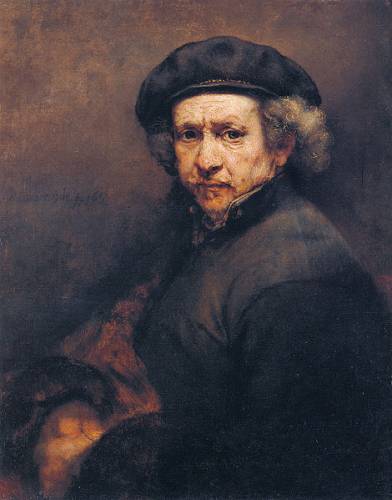
|
| |
|
|
| Rina | Date: Wednesday, 11.04.2012, 02:38 | Message # 4 |
 Union committee president
Group: Friends
Messages: 208
Status: Offline
| I tend to believe that "The Prodigal Son in the Brothel" is undoubtedly one of the most well-known Rembrandt's masterpieces. It is housed in the Gemäldegalerie Alte Meister of Dresden where I had a chance to enjoy its beauty.
The painting portrays two people, one of them being identified as Rembrandt himself. One shouldn't be puzzled looking at his face - it DOES seem quite crooked but only due to the fact the original canvas was abraded and has been retouched. The young lady looking over her shoulder is considered to be the painter's wife Saskia.
There exists an opinion that the left side of the canvas was cut (perhaps by the artist himself) in order to remove secondary characters and focus the observer's attention on the main theme. Today's scholars continue to see the painting as capturing a carefree moment in the couple's existence.
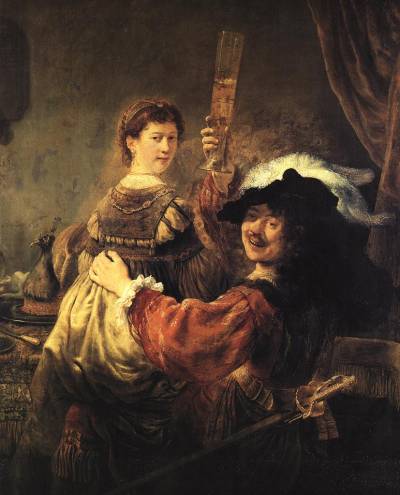
|
| |
|
|
| Teacher | Date: Wednesday, 11.04.2012, 13:47 | Message # 5 |
 Head teacher
Group: Admins
Messages: 375
Status: Offline
| The composition of the painting “The Night Watch” is very interesting. The characters form both the background and the foreground of the picture. One understands that the captain and his lieutenant are the main people in the drawing. They represent the first row of characters. Then we see one more person dressed in red clothes. He is related to the background of the picture, but still stands out of the crowd. All the other characters form a kind of a single entity, one living organism. There is one more person in the picture. It is a little girl. The question is what does she do here among all these night watchers? She is a symbol of Arquebusiers painted in a natural way. Her dress includes symbols of this class of warriors. These symbols are the claws of a dead chicken, the pistol and the militia’s goblet. The picture itself is very dynamic. This is one of the distinctive features of Rembrandt’s style. People’s poses make us think that it’s not just a picture, but the moment of a very rapid action that takes place in front of us.
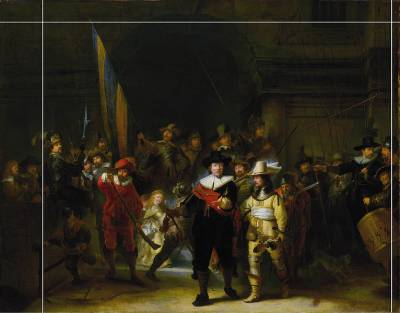
In Vino Veritas...
|
| |
|
|
| Teacher | Date: Wednesday, 11.04.2012, 14:59 | Message # 6 |
 Head teacher
Group: Admins
Messages: 375
Status: Offline
| Rembrandt is a master of shade. And his work “The Anatomy lesson of professor Tulp” is a bright example of his mastership. Professor Tulp was an official City Anatomist. He permitted only one public dissection a year. And this very event is depicted by Rembrandt. In the picture we see Doctor himself and some audience. There is one person who is omitted from the picture – the Preparator, because such an important scientist as Dr. Tulp didn’t deal with such a bloody work as dissection itself. Lights and darks of the picture are perfect. Some critics say that the shadow depicted by Rembrandt represents the shades of death. On the contrary, the light falls on people’s faces and the corpse. The expression of faces shows the importance of the moment. Rembrandt uses his technique of dynamism in the picture. It seems that all the people are in the middle of some action. Some poses are uncomfortable. It is also said that Rembrandt used some anatomical book to copy the muscles and tendons of the corpse. Anatomy lessons were a social event in the 17th century. That time can be called the blossom of science.
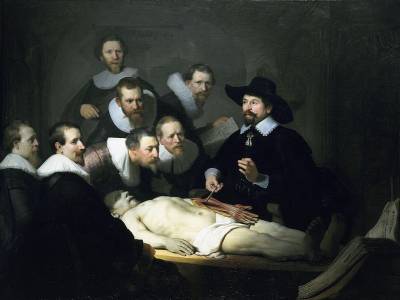
In Vino Veritas...
|
| |
|
|
| Teacher | Date: Wednesday, 11.04.2012, 15:45 | Message # 7 |
 Head teacher
Group: Admins
Messages: 375
Status: Offline
| I would like to analyse Rembrandt’s portrait “Man in a golden helmet”. The face of the character is depicted very true-to-life. This portrait is an example of Rembrandt’s style. Hу tried to show people as close to the physiological reality as possible. And through this nearness to reality the painter shows the psychological state or some inner conflict of his characters. The portrait “Man in a golden helmet” is not an exception. One sees an old man. His face is dappled with wrinkles. His glance is thoughtful. He might be a great man when he was younger. Probably he was some powerful warlord. His appearance makes us believe he is a very strong-willed, strict and determined person. But it seems that nowadays his former glory darkles. That’s why there is a shadow in the picture. And only a little part of man’s face and helmet is elucidated. And even the golden helmet seems not so golden. It has become dark. What does the man in the picture feel? What does he think about? Probably he is suppressed by the reality of the sunset of his life.

In Vino Veritas...
|
| |
|
|
| MissJane | Date: Thursday, 12.04.2012, 09:45 | Message # 8 |
 Union organizer
Group: Friends
Messages: 193
Status: Offline
| Rembrandt’s style of painting is very peculiar. Every time I look at his masterpieces, I feel that the objects and people themselves radiate a glowing warm light. He was a master of chiaroscuro, an Italian term for a style using strong lights and heavy shadows to create depth in a painting and a center of interest. The most prominent evidence of this thought is his Philosopher in Meditation (1632), Aristotle with a Bust of Homer (1653) and Portrait of Hendrijke Stoffels (1655).
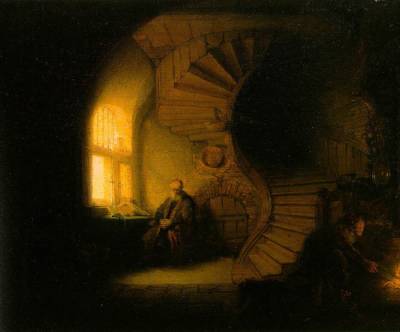
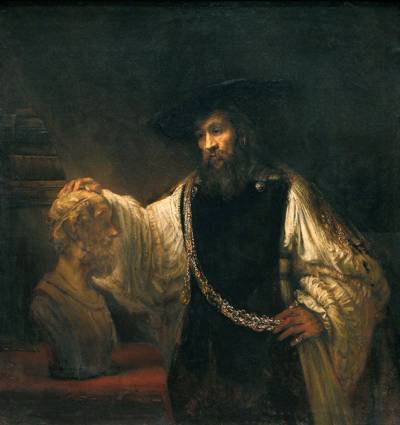
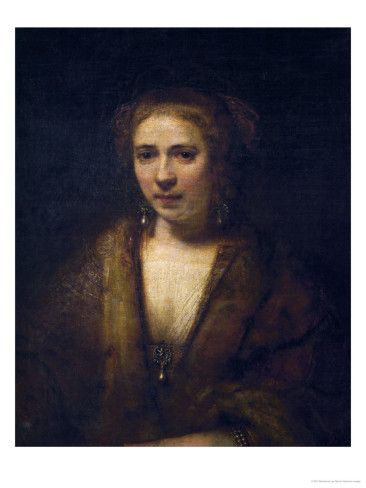
The palette of colours in his canvases ranges from dark oppressive hues to golden illuminating yellow. This special feature reveals Rembrandt’s understanding of human nature as an enormous receptacle of light, goodness and morality. The emotional saturation of his paintings is highly esteemed and cannot be compared to anyone’s manner of expression. The world of human internal experience casts a spell over the spectator. I simply adore his accurate depiction of people’s faces as the mirrors of their souls.
|
| |
|
|
| Nastay62rus | Date: Tuesday, 08.01.2013, 09:34 | Message # 9 |
|
Union organizer
Group: Users
Messages: 102
Status: Offline
| In creativity of the artist the chamber portrait starts taking very big place. Rembrandt opens spiritual human life, as if lasting in time and space
|
| |
|
|












